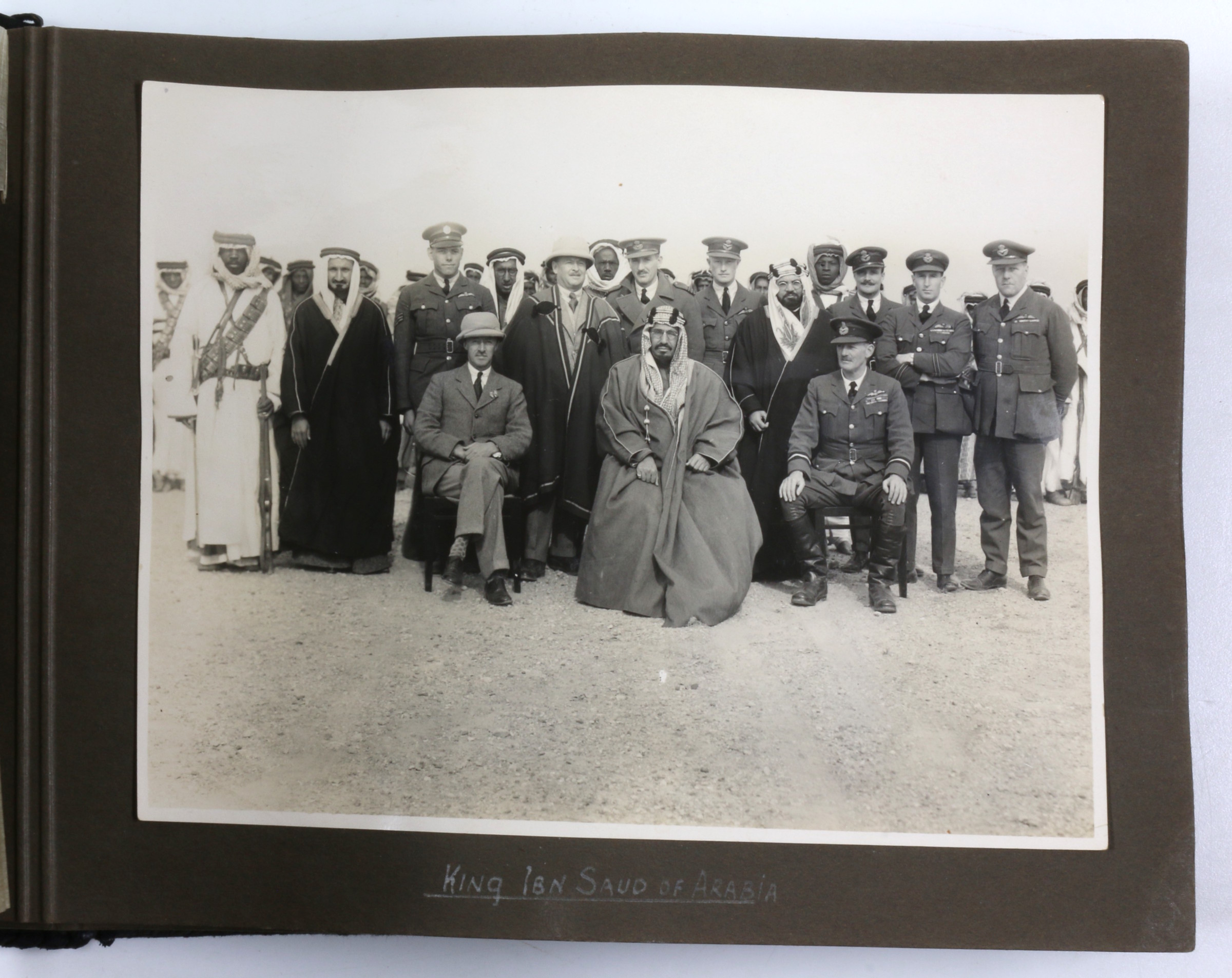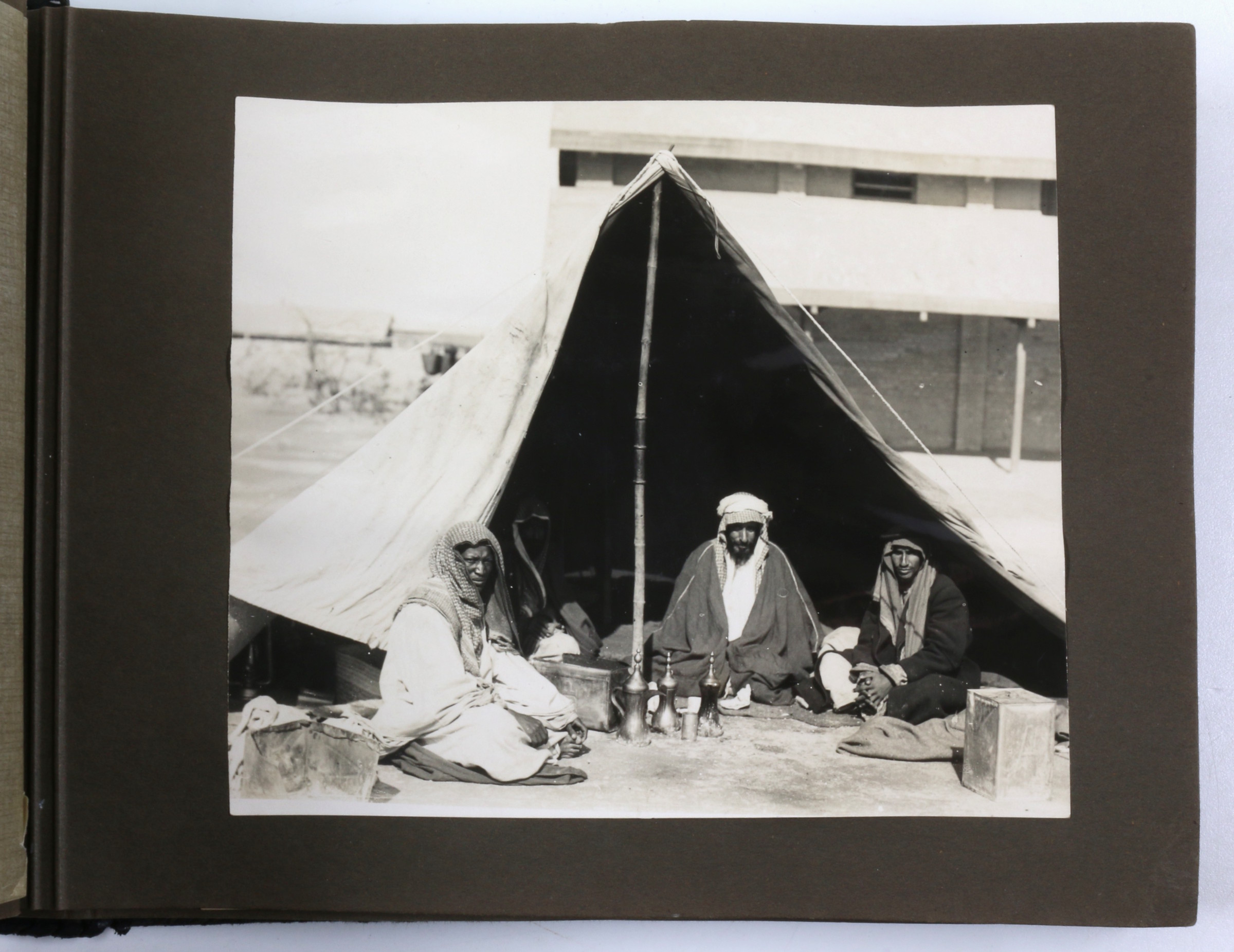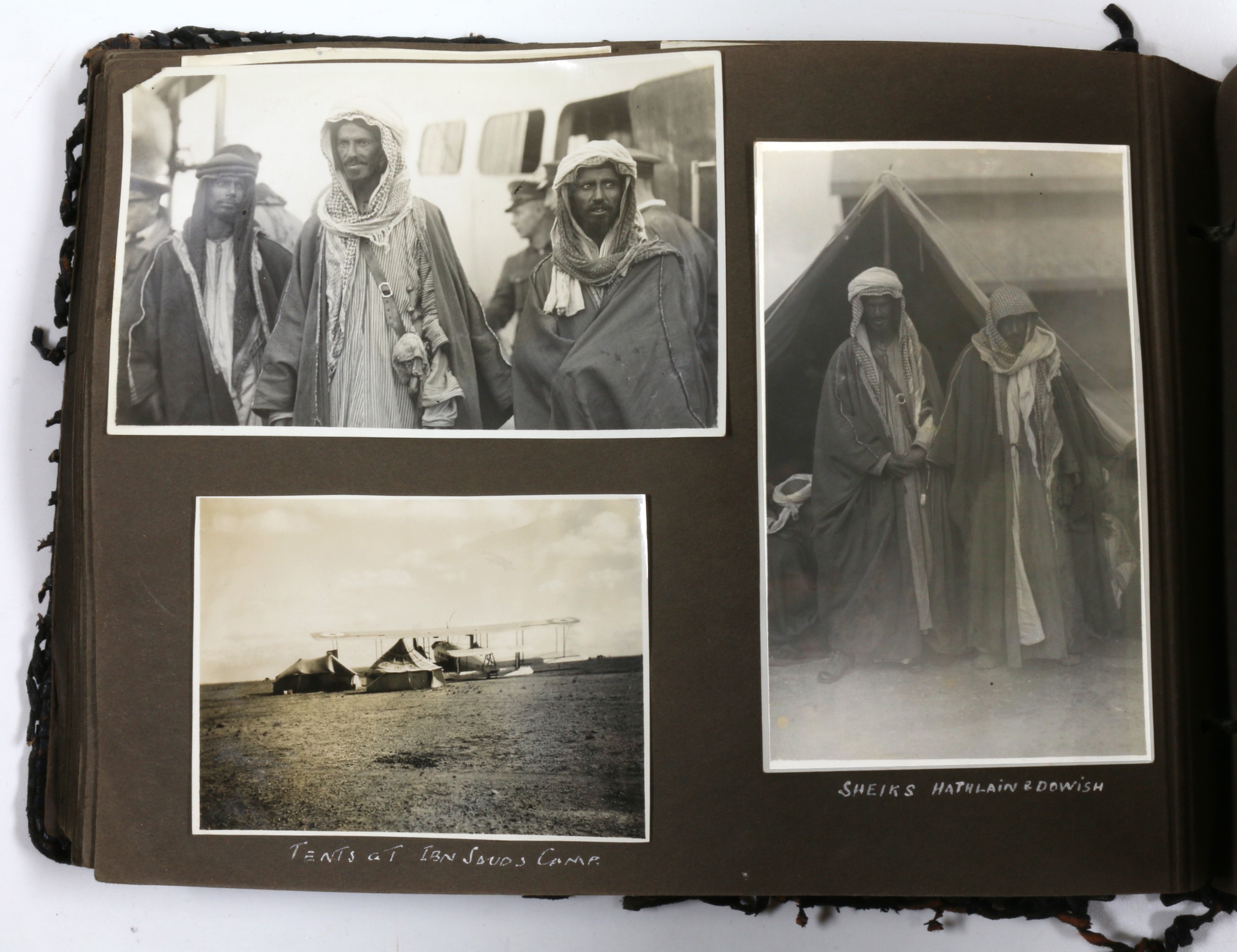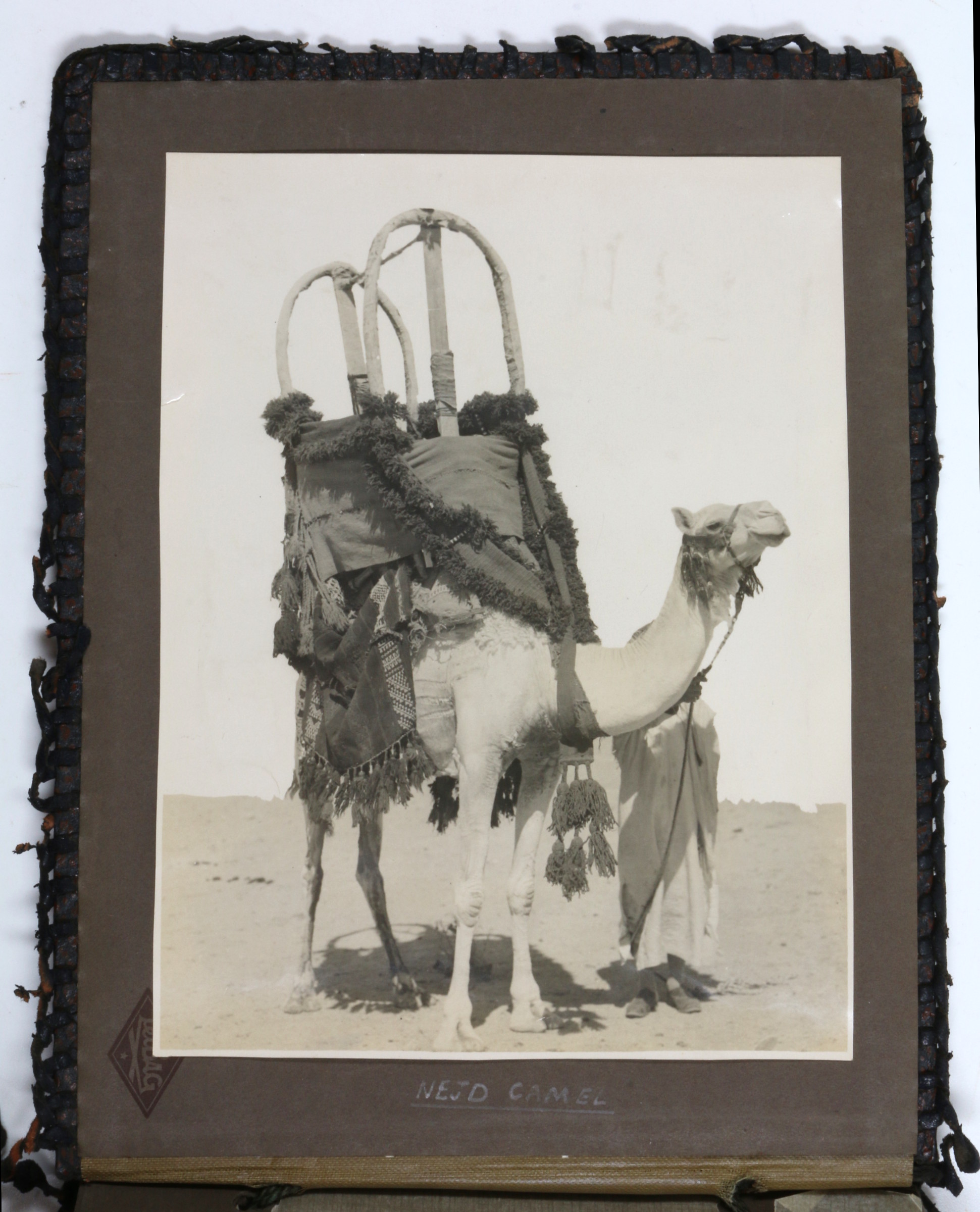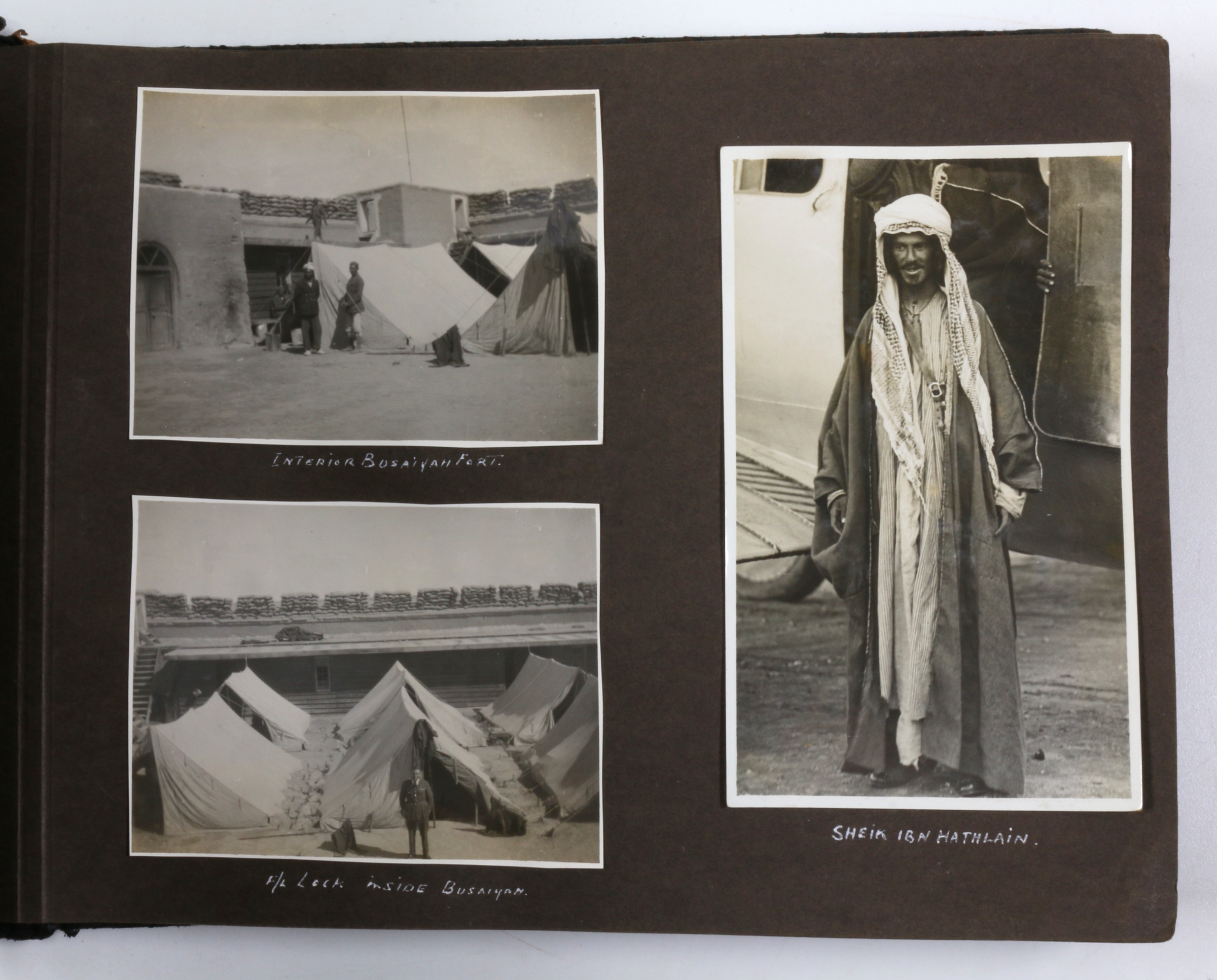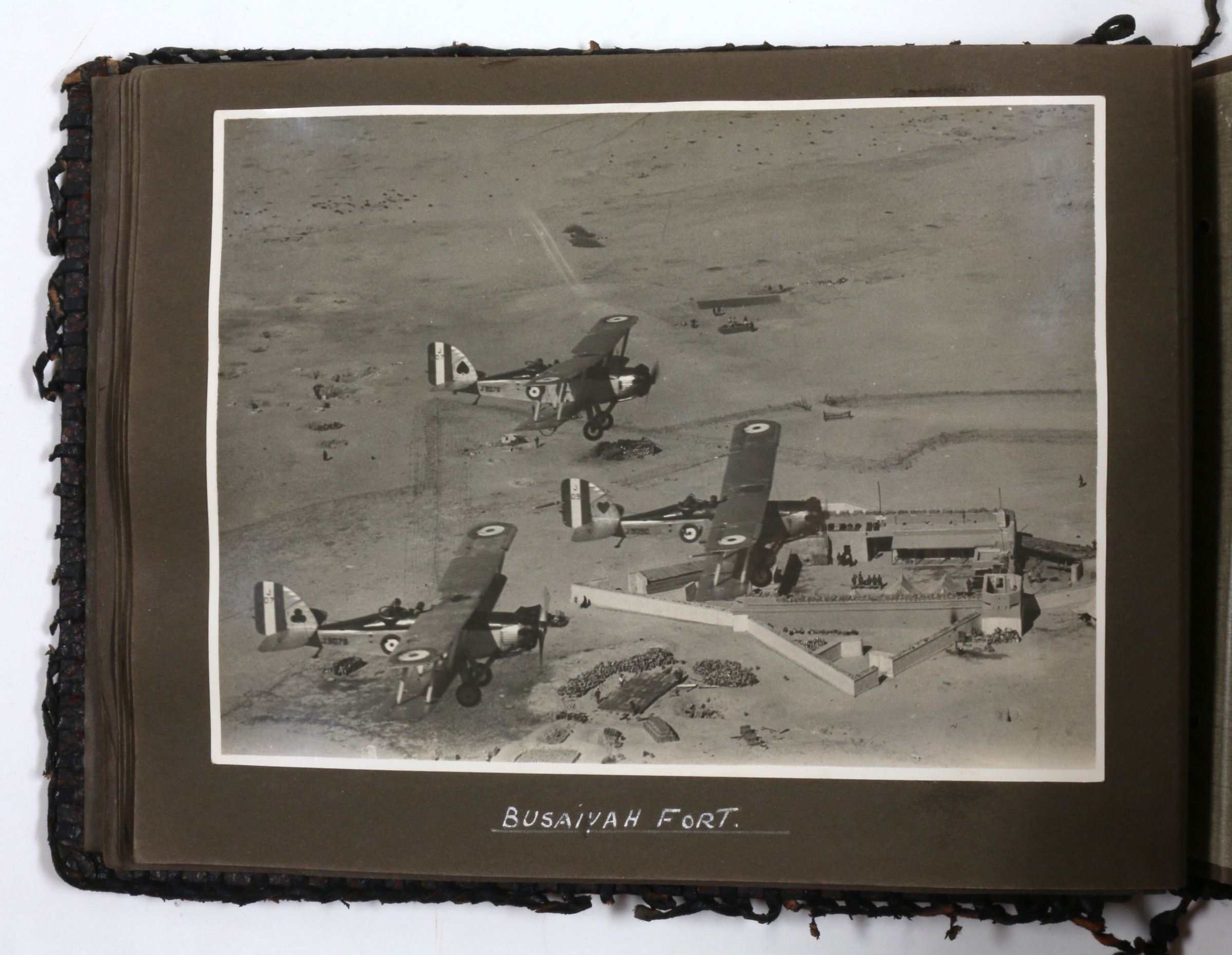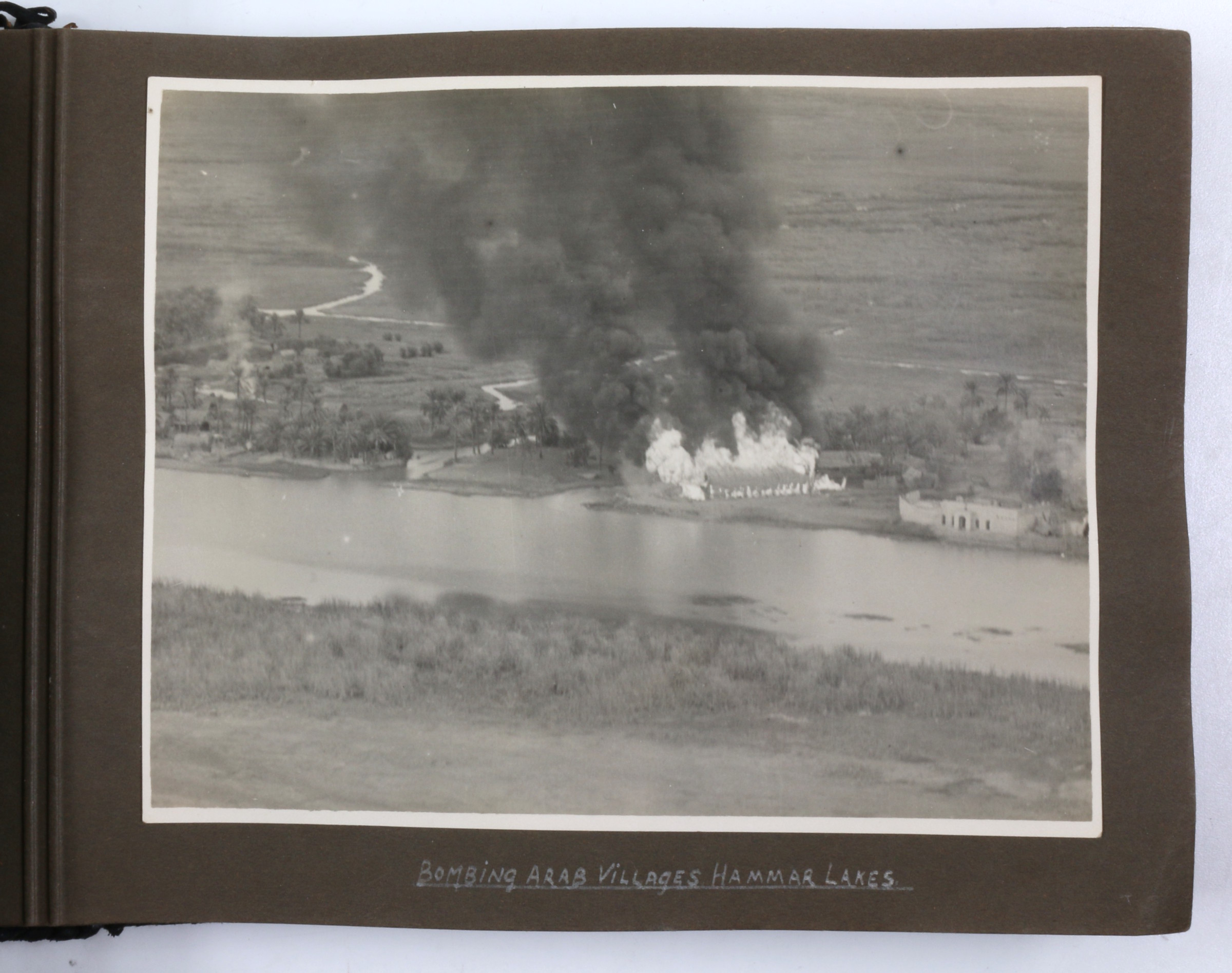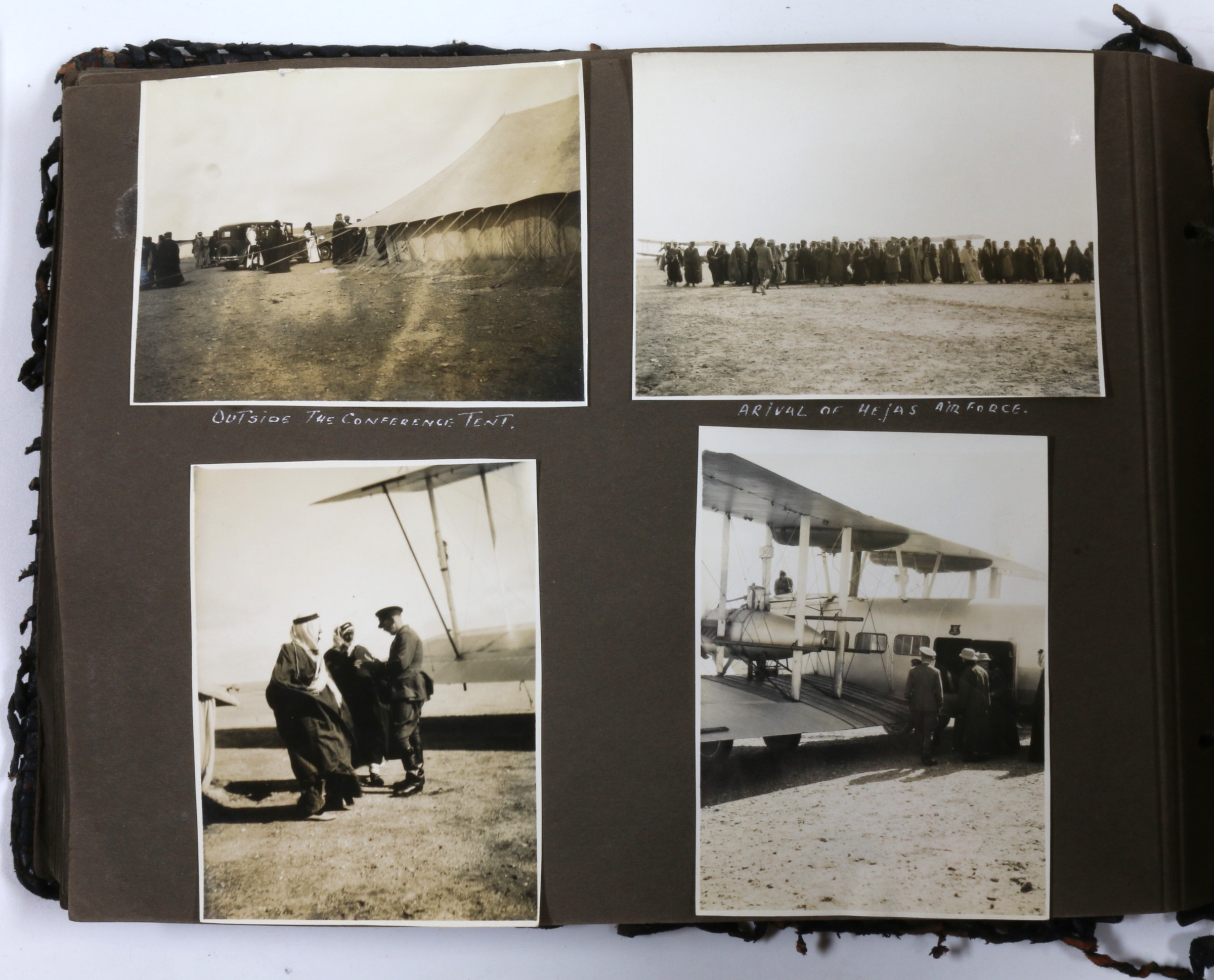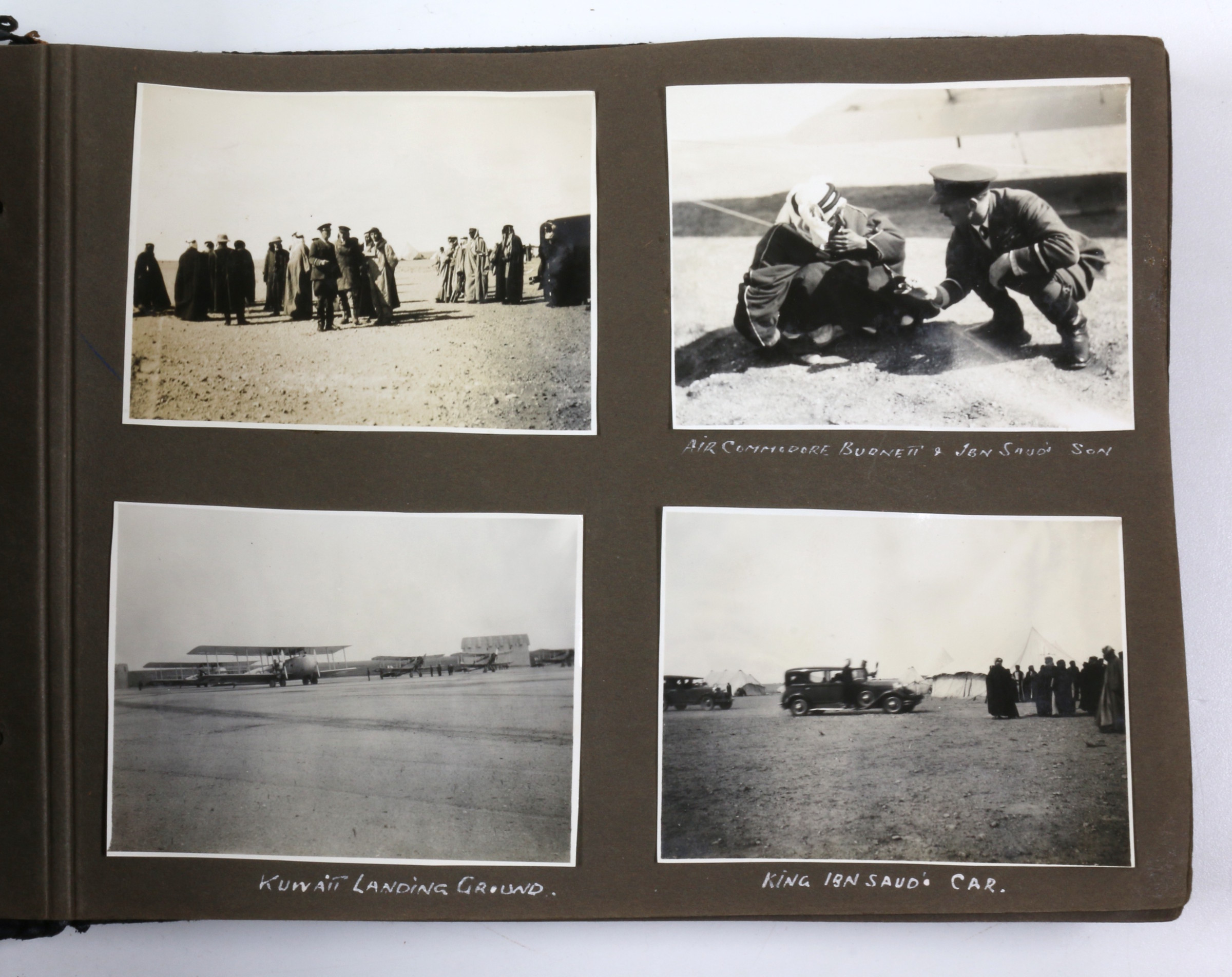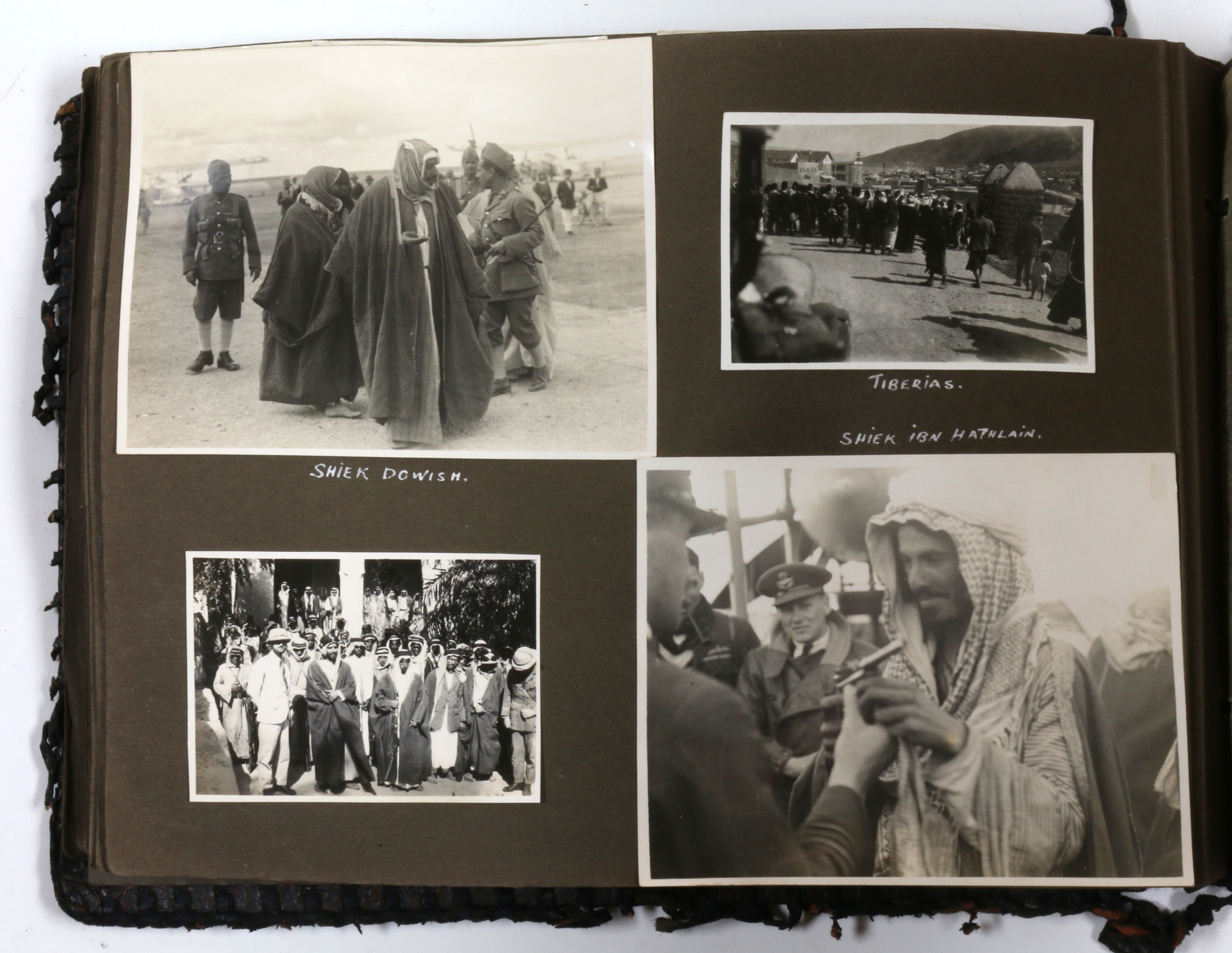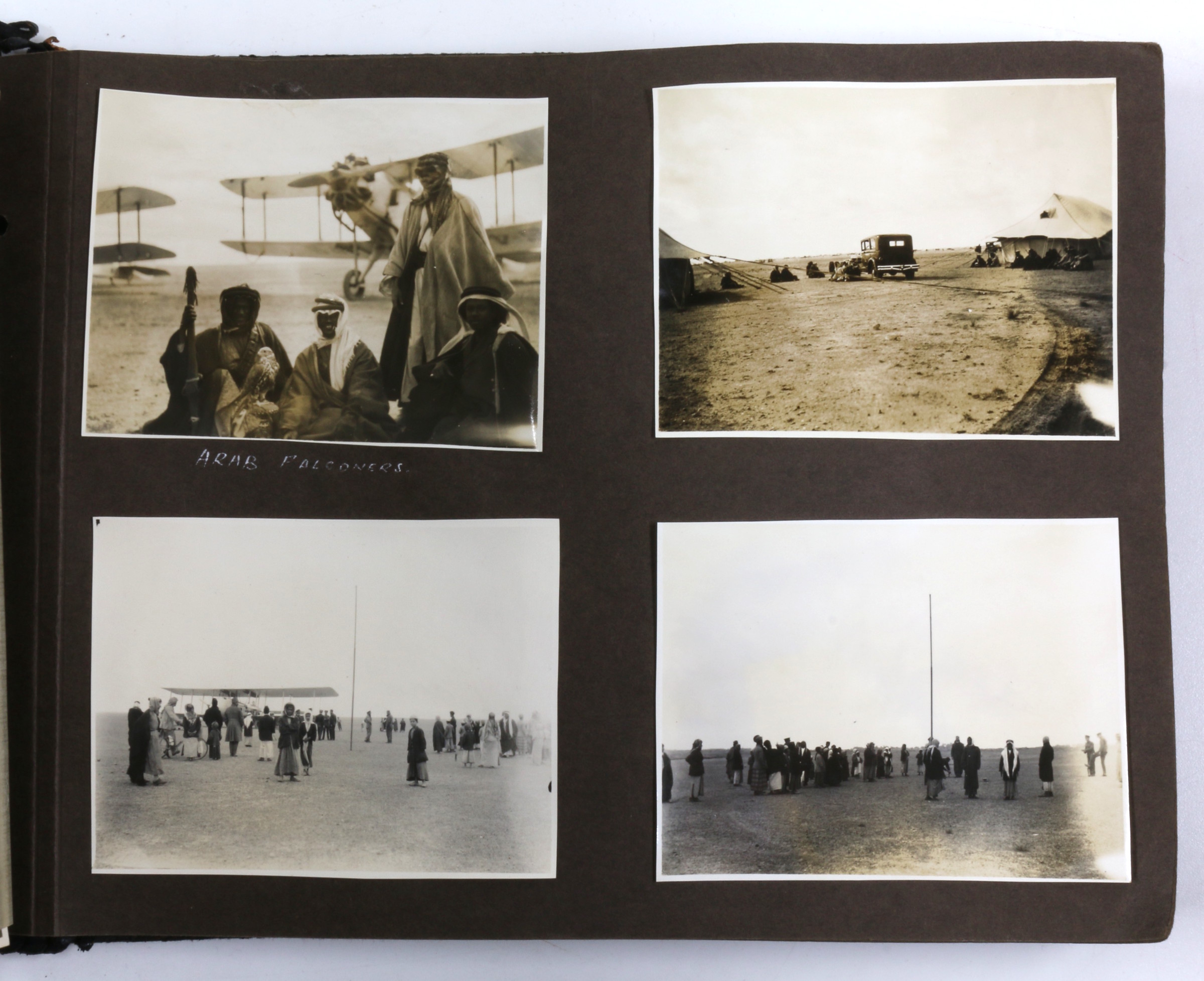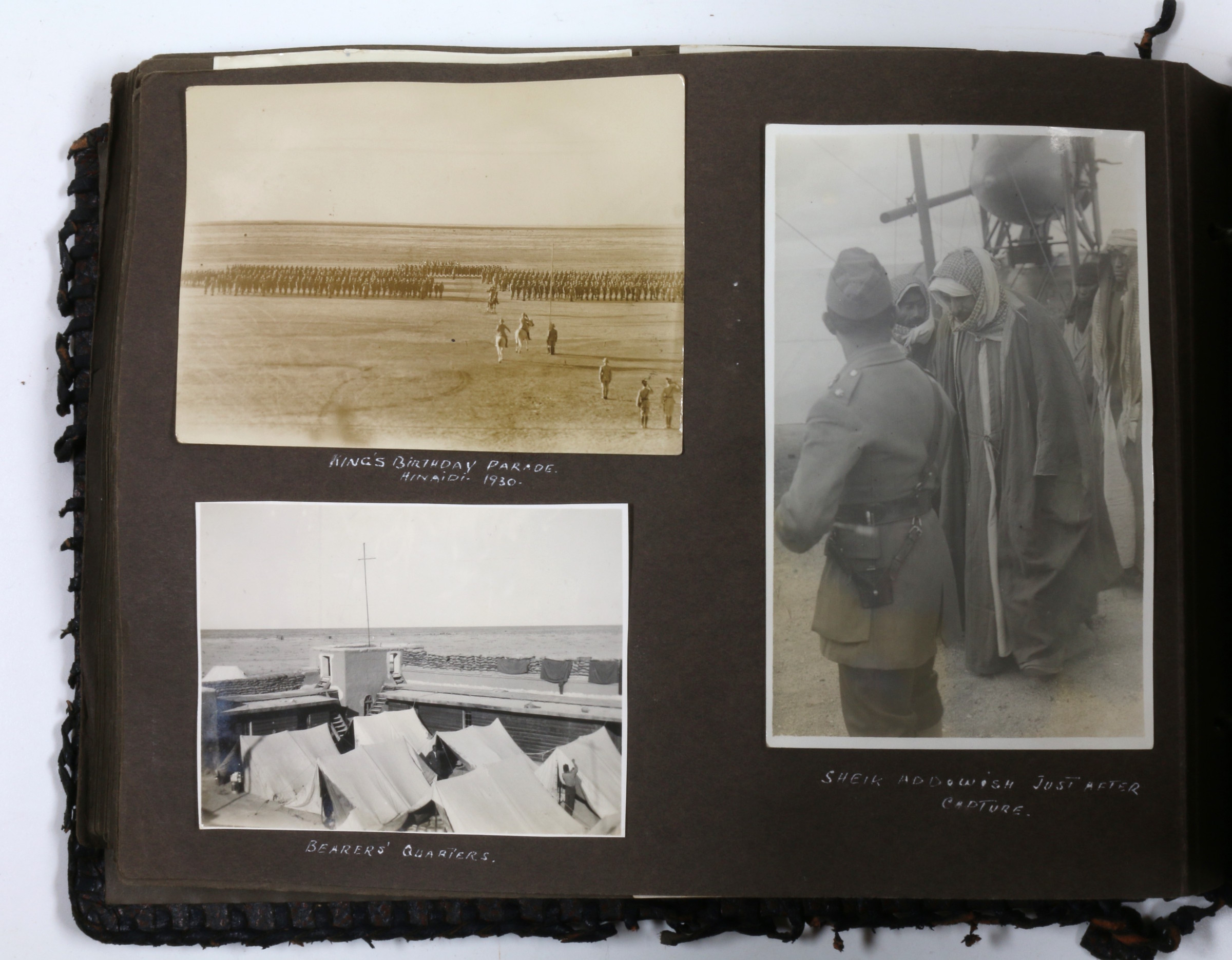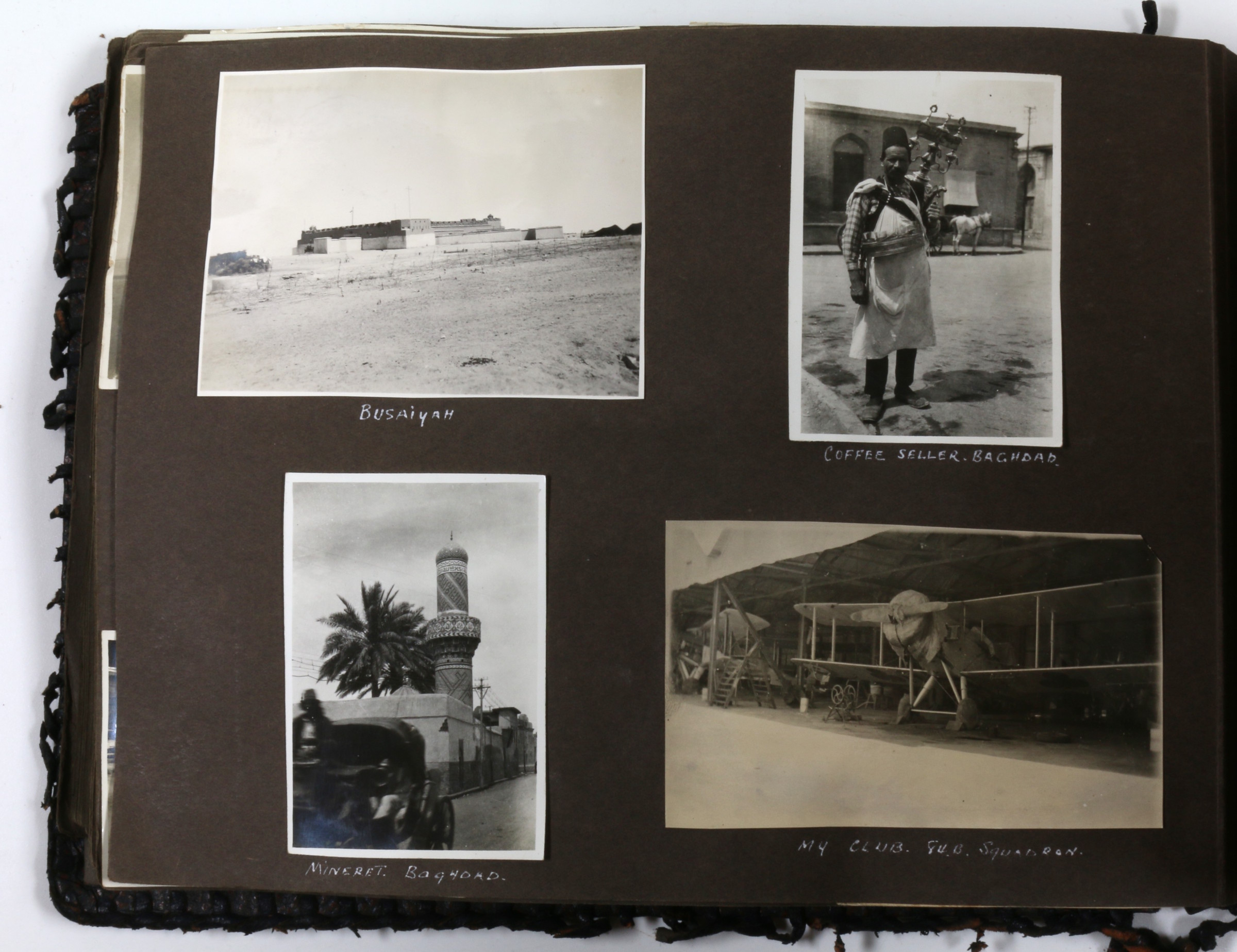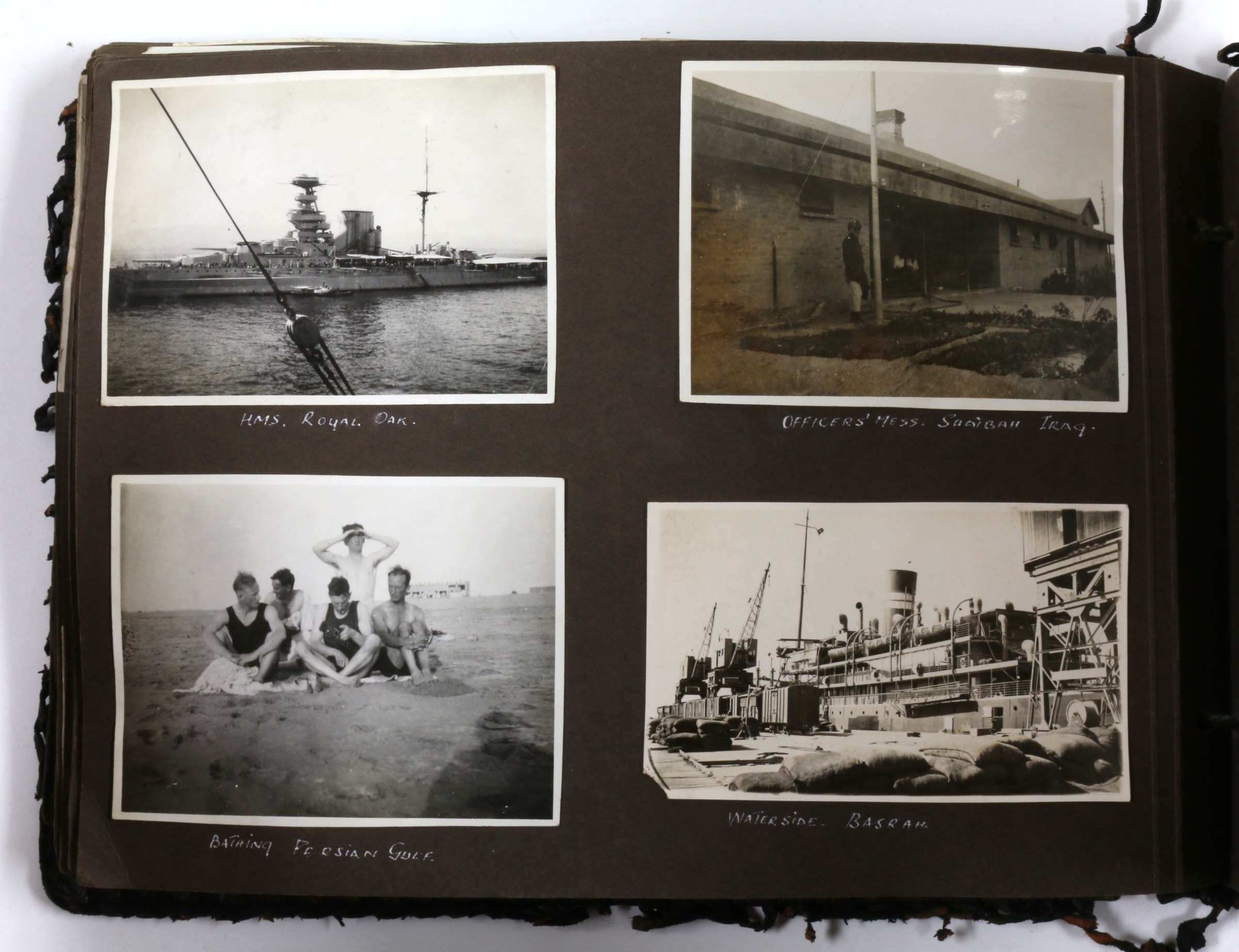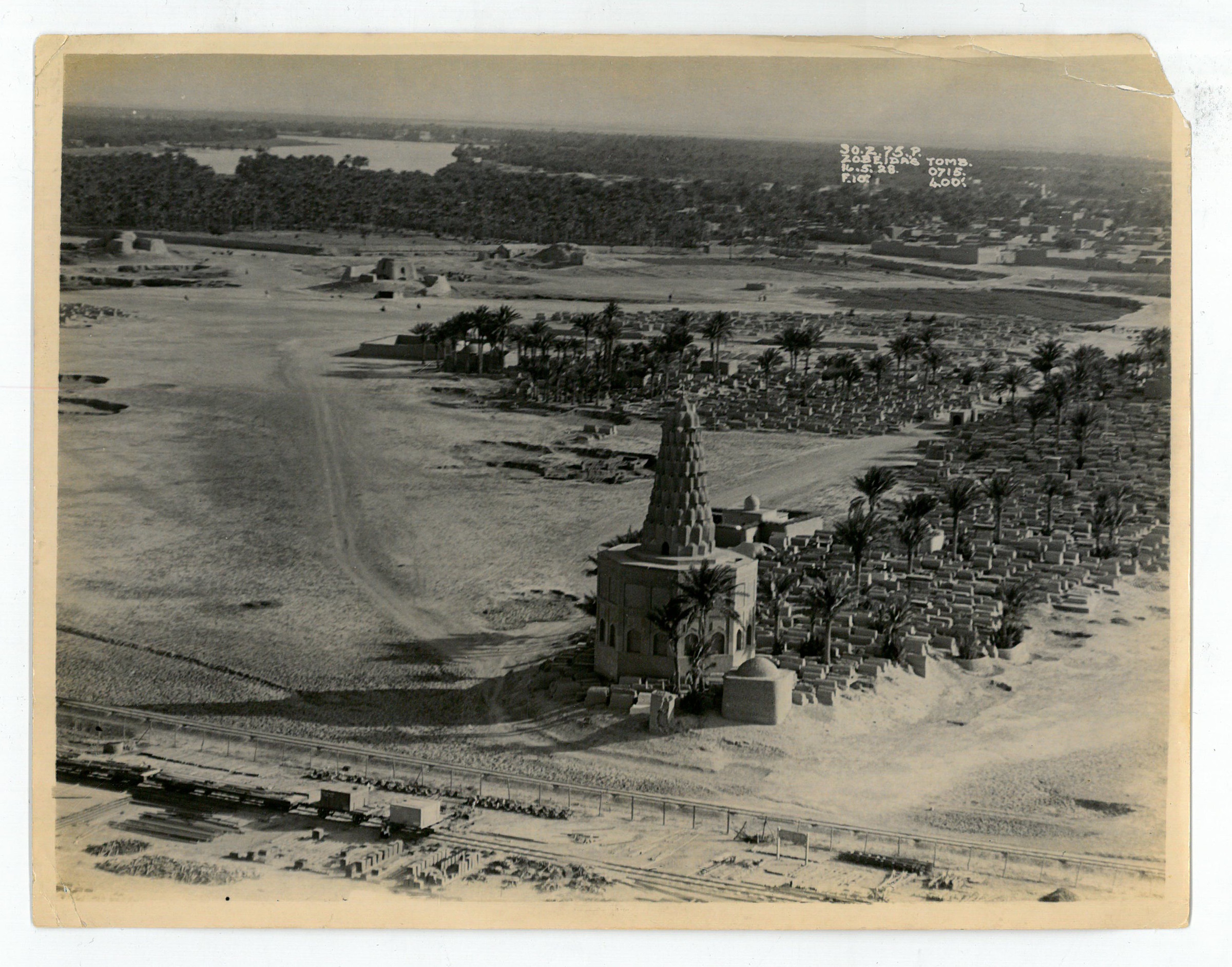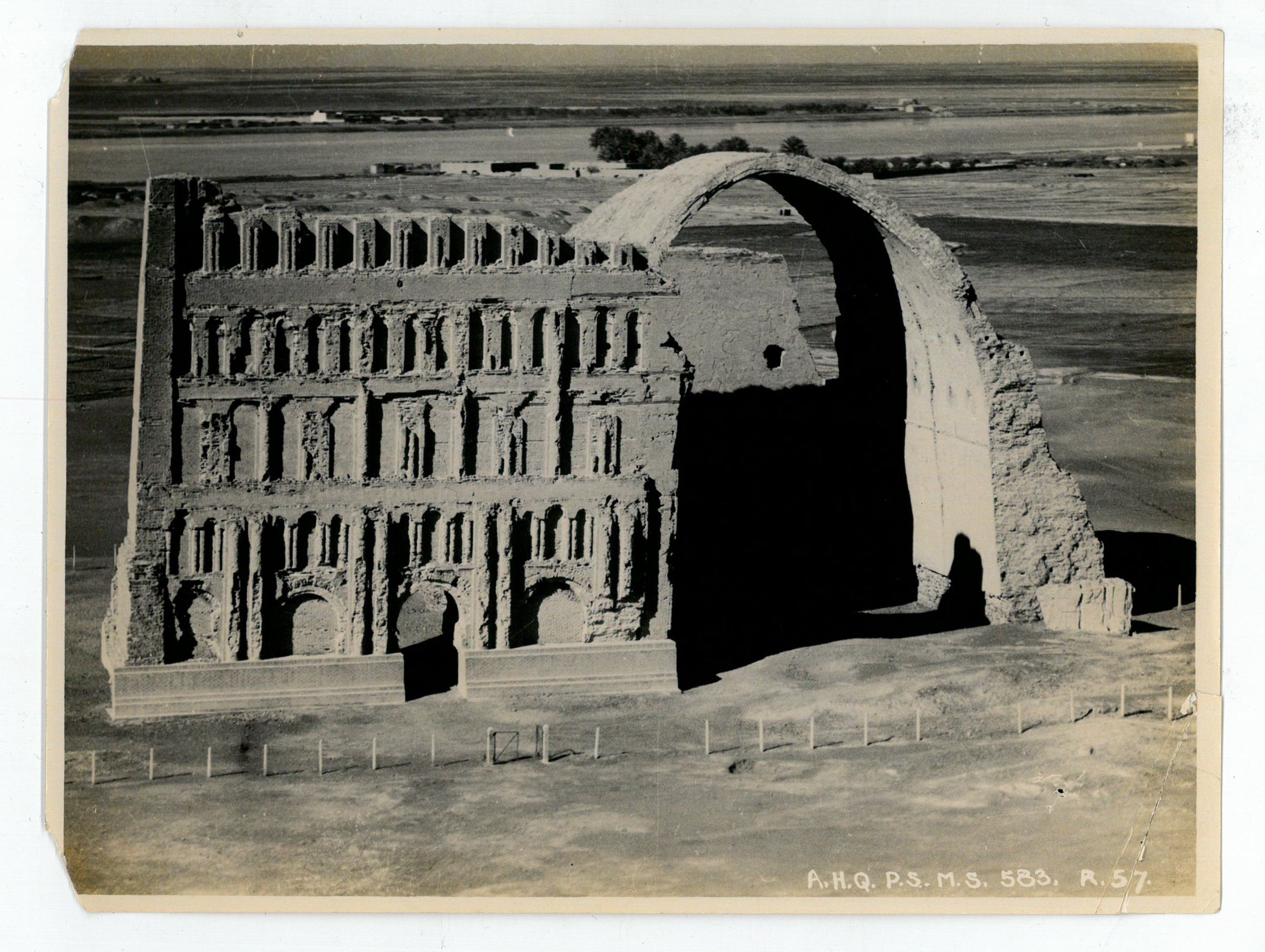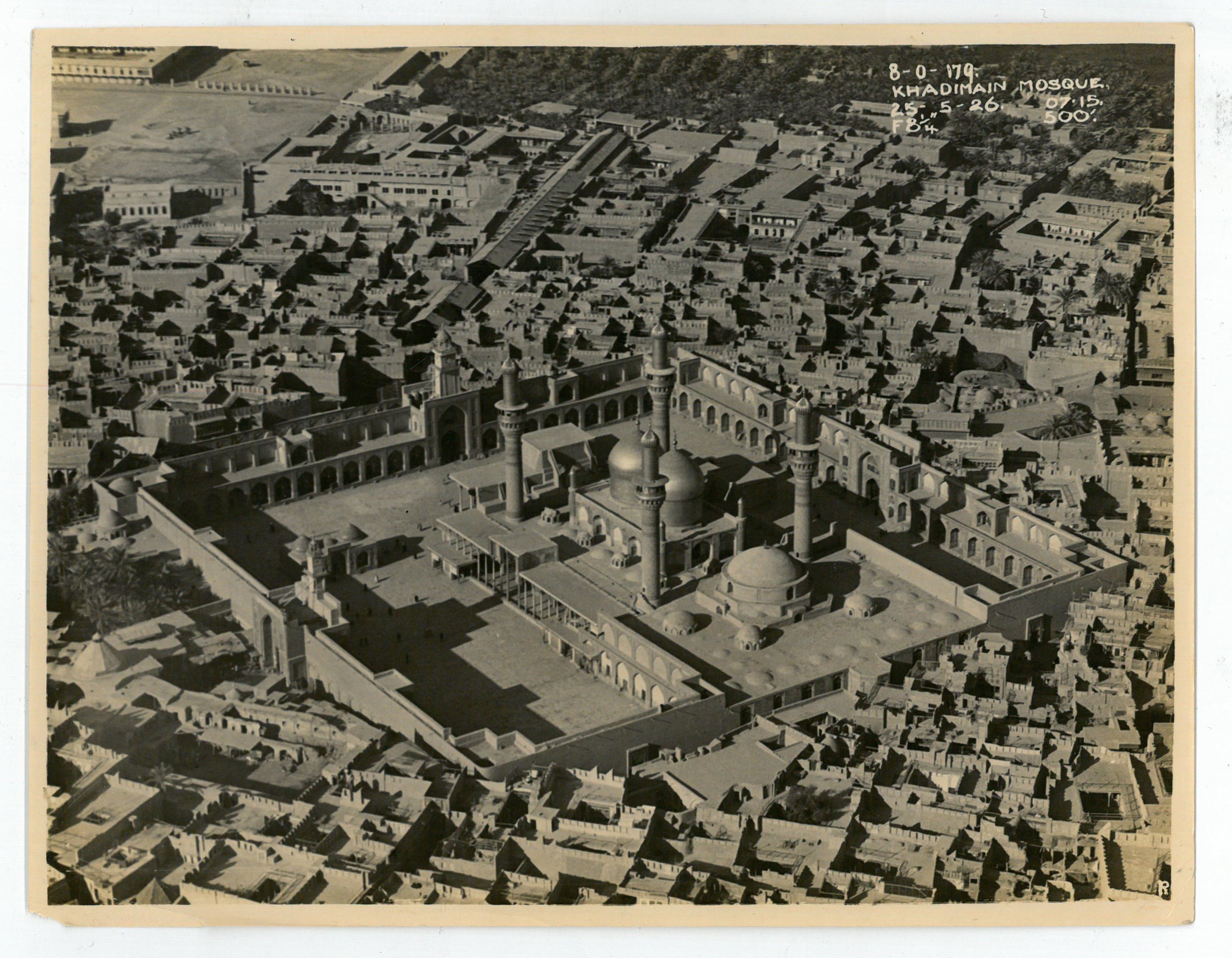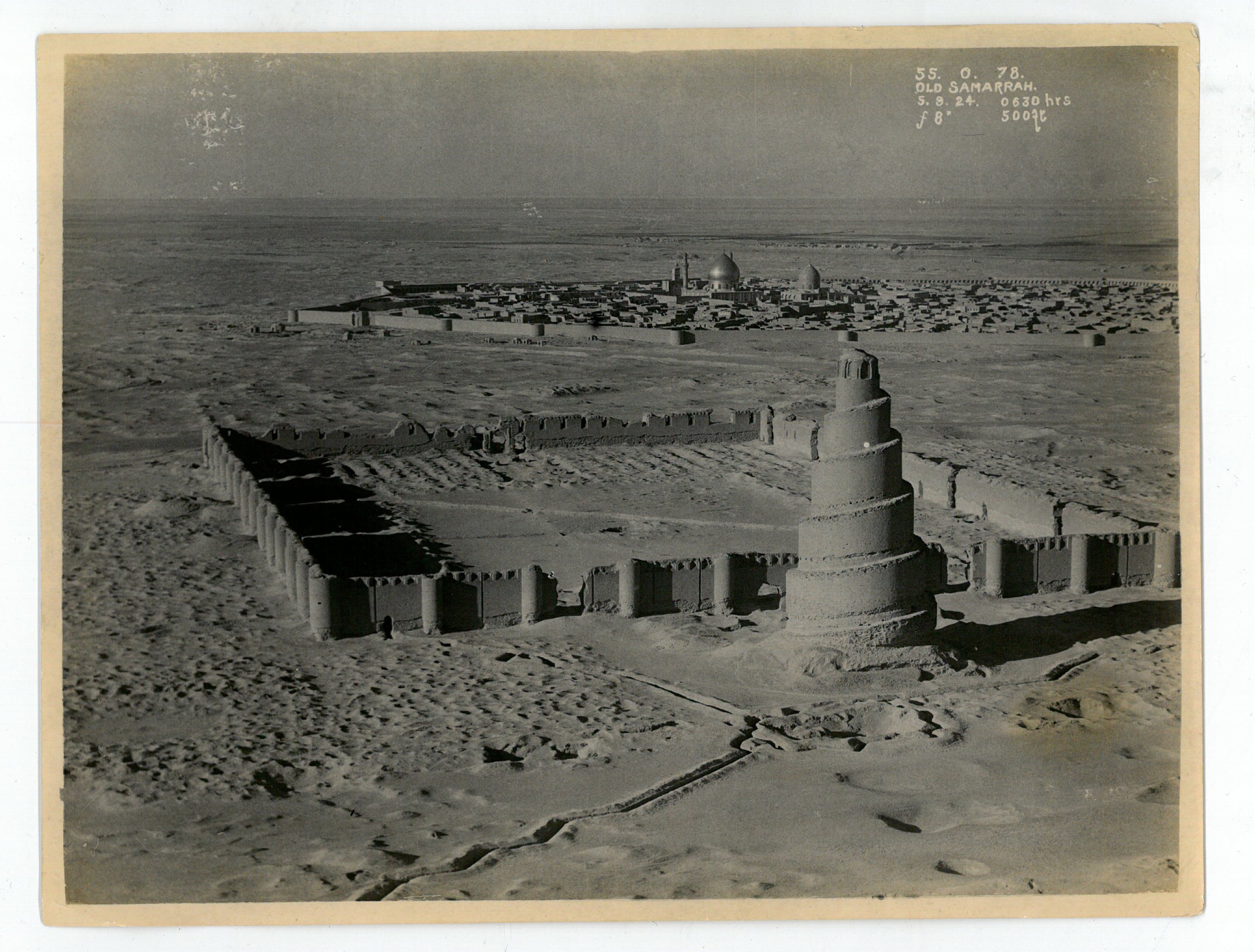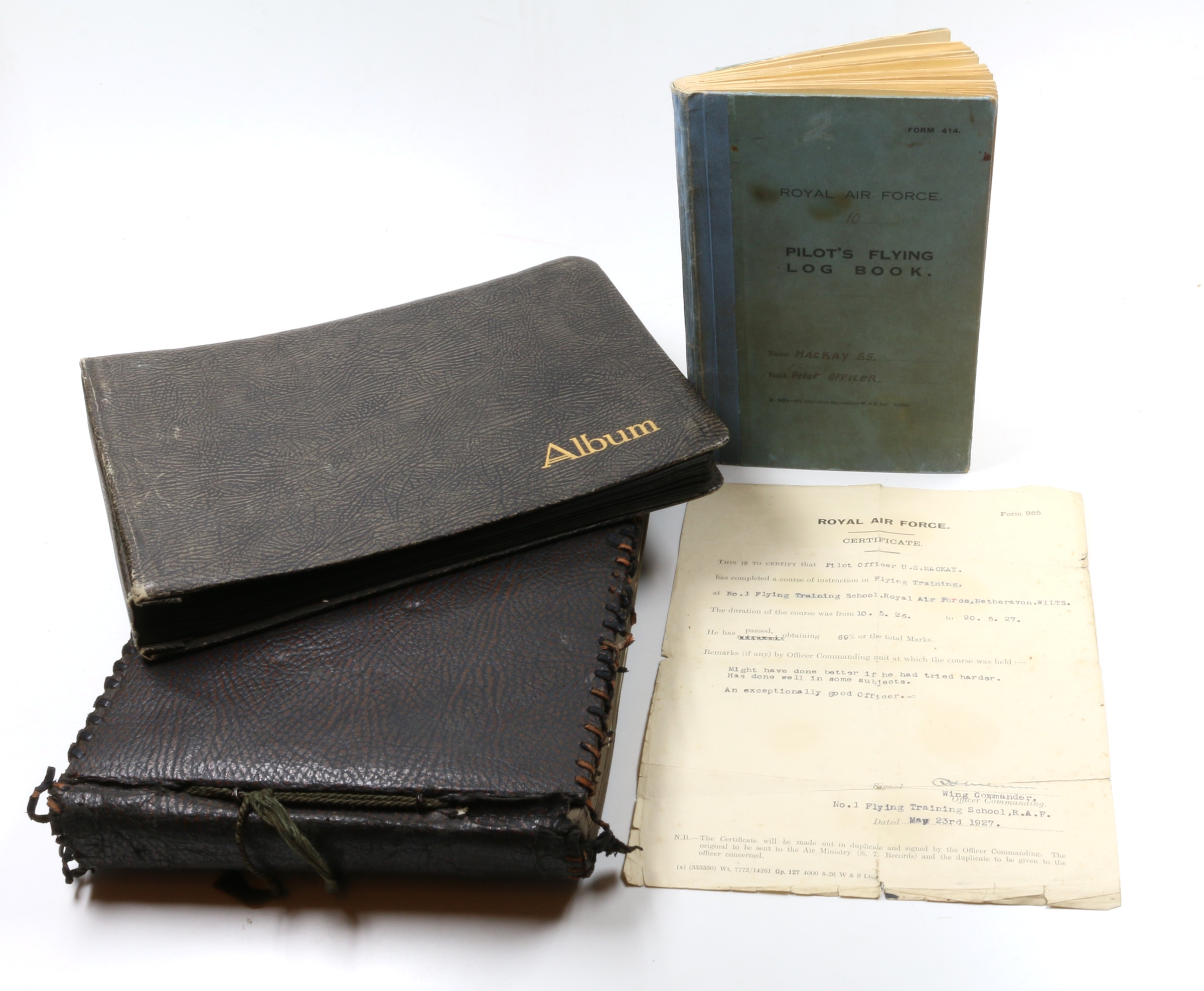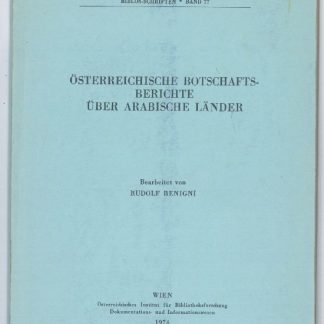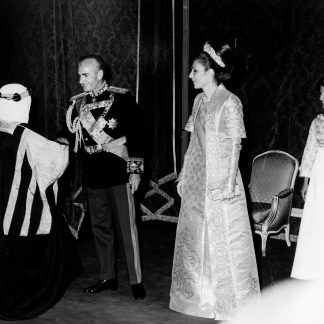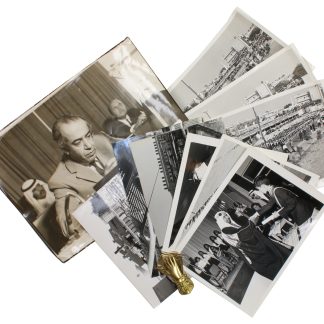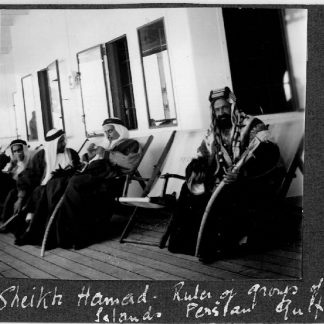[VERKAUFT]
Dieses Stück ist bereits verkauft. Am Ankauf eines gleichwertigen Exemplars bzw. von Stücken ähnlicher Bedeutung sind wir immer interessiert.
In Khabari Wadha with Ibn Saud: the formation of the Kingdom in mostly unpublished photos
Two photo albums of private and operational (restricted) photos of campaigns over the Gulf region and Iraq.
Oblong 4to. 2 vols., together with Mackay's RAF Pilot Flying Log Book and his RAF Certificate. Contemporary sheepskin and cloth covered boards; ca. 220 photos of Middle Eastern locations and people, including many RAF aerial reconaissance images (as well as a small number of others showing various other subjects). Photos measure ca. 5 x 8 to ca. 16 x 20 cms.
An unusual, copious collection of rare original photos, assembled by a British airman who happened to be in the right places at the right time, with a quick eye for telling images and uncommonly good access to restricted documentation. The owner of these albums, the New Zealand-born RAF pilot U. S. Mackay, saw service in Arabia, Iraq and the Gulf area during the late 1920s and early 1930s, at the very time when Abdulaziz Ibn Saud was consolidating his rule over Hejaz and Nejd and striking down the Ikhwan tribal army's insurgency and their incursions into the neighboring British protectorates Iraq and Kuwait, which threatened his rule. In 1932, Ibn Saud would succeed in uniting his territories into a single state, forming the Kingdom of Saudi Arabia.
Stationed with the 84B Squadron at Britain's Shaibah Air Base near Basrah, Mackay was one of the limited number of western officers well placed to witness at first hand the events leading up to the founding of the Kingdom. In his first album (whose tone is set by the opening photo on the pastedown, a large print of a Nejd riding camel), some twenty photographs - both private and rare army images - cover the arrival of the defeated Ikhwan leaders Faisal Al Dawish and Naif ibn Hithlain at the air base at Basrah after their surrender to the British on 10 January 1930 and their ensuing extradition to the King. Among this set is a fine, large group portrait of Ibn Saud with Hafiz Wahba and other retainers, together with the British officers and diplomats Hugh Biscoe, Charles Burnett and H. R. P. Dickson, taken on 22 January at the King's camp at Khabari Wadha, half-way between Basrah and Riyadh, where the captured rebels were subsequently flown to be handed over to their ruler (cf. V. Dickson, 40 Years in Kuwait, p. 80f. and plate 5; H. R. P. Dickson, Kuwait and her Neighbors, pp. 318 ff.). Several photos show the captured Shaikhs - the gaunt figure of Ibn Hithlain and the hunched one of Al Dawish, who was still labouring from the abdominal injury he had sustained at the Battle of Sabila the previous March; another shows H.M.S. Lupin in the Shatt-al-Arab, the ship where they were first detained. Numerous previously unknown photos show Ibn Saud's camp at Khabari Wadha: the royal tents, the King's luxury car, Arab retainers seated among British planes with their gyrfalcon, and Air Commodore Burnett in conversation with one of Ibn Saud's eldest sons. Another shows the "ar[r]ival of [the] Hejas Airforce", the English planes and pilots Ibn Saud had commissioned from the British government for what would be his new state. There are also photo reproductions of the pencil portraits which H. Stewart drew of the rebels at Shaibah during their surrender negotiations (cf. H. R. P. Dickson, plate opposite p. 260), as well as several of British officers. Among the many other noteworthy images in the album are street scenes in Baghdad, Basrah and other towns, British war ships in the Gulf (some identified in the captions), a flying boat over Kuwait and the Gulf, an Imperial Airways de Havilland Hercules at Shaibah, a British armoured car, Arab guides and sentries, "Two Arab Murder[er]s and Escort" before a tent, the flogging of a local overseen by British officers, and an excursion to the ruins of Baalbek in Syria, along with group photos of British squadron officers and NCOs stationed in Iraq and the Gulf during the time. Yet perhaps among the most intriguing of these albums' images are the large number of strategic aerial photographs taken either by Mackay himself or by specialist army staff on his squadron's reconnaissance flights, mostly restricted RAF imagery showing aerial views of cities (Basrah, Baghdad, the Ctesiphon Arch, Zubayr, Kut, Samarrah, Sulaymaniyah, among others), military operations ("Bombing Arab Villages Hammar Lakes" with the buildings blazing, bomb hits observed from the plane immediately above), desert fortifications and encampments (As-Sulam Fort and biplanes overflying Busaiya Fort, which had been attacked by the Ikhwan in the winter of 1927/8), etc. These aerial views - exclusively in large, well-defined prints - dominate the second album, where they are accompanied by crisp in-flight images of the various aircraft used by the British in the late 1920s and early 30s.
The collection includes Mackay's RAF Flying Log Book, documenting his ongoing flight training on various types of airplanes (ending with the entry "aircraft crashed" after "crazy flying practice" in 1931). As Mackay's RAF Certificate shows, he completed his basic flying training in 1927 with the assessment "might have done better if he had tried harder. Has done well in some subjects", though his Wing Commander thought him "an exceptionally good soldier". Mackay continued serving in the RAF as pilot and died at the end of WW2 of altitude sickness. He had been renowned for flying at extreme heights and when in charge of Spitfires refused to use pressure equipment.
A few of the loose photos have marginal tears or corner flaws, but overall are in excellent condition. An important ensemble providing first-hand views of Northern Arabia at a crucial time in its history, including rare documents of Anglo-Saudi diplomacy immediately before the founding of the Kingdom of Saudi Arabia, the majority entirely unpublished.

